Cardio is a broad term used to describe any form of training that affects the cardiovascular system, which is comprised of your heart, lungs, and blood vessels. Any activity that causes your heart and breathing rate to speed up is technically cardio.
While any type of cardio can help you burn fat, get fit, and improve your fitness, there are two main cardio classifications you should be aware of:
- High-Intensity Interval Training – HIIT
- Low-Intensity Steady-State – LISS
These two types of cardio are at opposite ends of the intensity scale and yet provide many of the same benefits. However, they’re also quite different and offer several additional benefits and drawbacks.
In this article, we’re going to put HIIT and LISS to the test to help you decide which one is best for you.
What is HIIT?
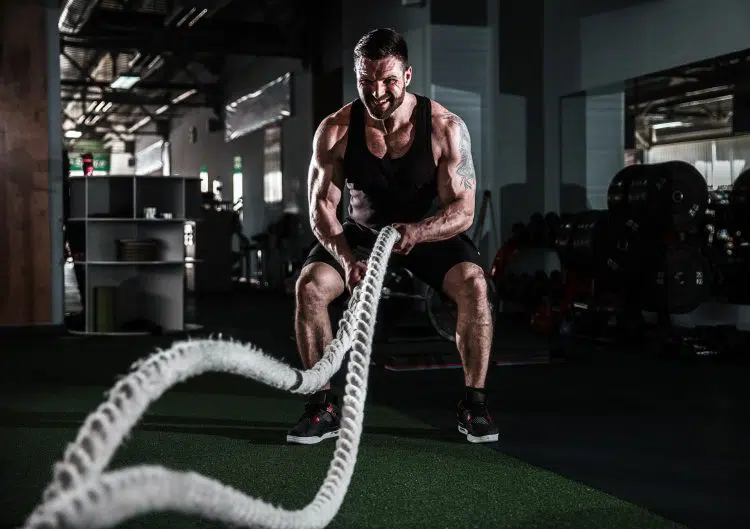
High-intensity interval training is a form of intermittent cardio. During an HIIT workout, you exercise hard for a predetermined length of time or number of reps, rest briefly, and then repeat. The number of repeats depends on your workout and current fitness level but could be as few as five or more than ten.
Level Up Your Fitness: Join our 💪 strong community in Fitness Volt Newsletter. Get daily inspiration, expert-backed workouts, nutrition tips, the latest in strength sports, and the support you need to reach your goals. Subscribe for free!
HIIT is a type of anaerobic training. Anaerobic means without oxygen. When you do HIIT, you work so hard that your body cannot keep your muscles supplied with oxygen. Typically, your heart rate will come close to or even exceed 90% of your maximum. Then, when you rest, your heart rate partially decreases so that you can perform another rep.
HIIT workouts can involve a range of exercises and activities; it’s a very flexible training method. For example, you could do sprints on a bike, treadmill, or rower, or exercises like burpees, box jumps, power cleans, or kettlebell swings.
One of the most famous HIIT workouts is Tabata training. In this workout, you train as hard as you can for 20-seconds and then rest for 10-seconds. This sequence is repeated for eight reps to total four minutes.
Related: Burn Fat and Build Muscle with Our Top 10 Tabata Workouts
HIIT benefits include:
- Burn a lot of calories in a short time – HIIT burns 20 -30% more calories than most other types of exercise (1).
- Helpful for weight loss – combined with a healthy diet, regular HIIT workouts are a proven weight-loss method. Some studies also suggest that HIIT helps target belly fat, which is a serious cardiovascular health risk (2).
- Increased post-exercise metabolic rate – HIIT increases your post-exercise metabolic rate and fat burning more than lower-intensity cardio (3).
- Preserve or gain muscle mass – depending on the type of HIIT you do, this type of workout may lead to increased muscle mass or, at least, help preserve the muscle you’ve already got (4).
- Improved aerobic and anaerobic fitness – HIIT is a form of anaerobic training, so it stands to reason that it’s good for your anaerobic fitness. However, HIIT has a positive impact on aerobic fitness, too, making it a very efficient form of exercise (5).
What is LISS?
LISS goes by several other names, including aerobic training, long slow distance training (LSD), steady-state training (SST), and continuous cardiovascular training (CCT). LISS is just a more recent term for what is a very traditional form of exercise.
With LISS, you exercise for an extended time while keeping your heart rate around 60-85 percent of your maximum. This should feel reasonably comfortable, although if your heart rate approaches 80-85%, your workout will feel more challenging. While it’s perfectly normal for your heart rate to vary during a LISS workout, your pace and intensity level should remain relatively constant.
Common LISS activities include walking, hiking, jogging, running, swimming, cycling, rowing. Group exercises like step and Zumba are also variations of LISS training.
Typically, LISS workouts last no less than 20-30 minutes and can be as long as 90 minutes or more.
LISS Benefits
LISS has many of the benefits of HIIT, including weight loss and improved fitness. However, exercising at a lower level of intensity means that LISS is NOT so good for increasing post-exercise metabolism, muscle mass, or anaerobic fitness.
HIIT vs. LISS Cardio
HIIT and LISS can help you lose weight and get fit. However, while they share some benefits, there are some significant differences too. In this section, we compare some of the main features of these two types of workouts so that you can determine the best option for you.
Time efficiency
With workouts as short as four minutes, it’s clear that HIIT is the most time-efficient type of cardio. Studies also suggest that 20-minutes of HIIT is just as effective as a much longer LISS workout (1).
Winner: HIIT
Calorie burning
Ten minutes of HIIT burns 20-30% more calories than the same duration of LISS. However, because HIIT workouts are shorter, it’s entirely possible to burn the same number of calories with both types of exercise. You’ll just need to work out longer with LISS to do it.
Winner: It’s a draw!
Enjoyment
Studies suggest that a lot of exercisers enjoy LISS more than HIIT (6). LISS workouts can be relaxing, you can chat with a friend while you work out, and many people find low-intensity exercise good for lowering stress levels. In contrast, HIIT workouts are usually painful, not relaxing at all, and can even cause an increase in stress (7).
Of course, some people enjoy pushing themselves to their limits and are very happy to suffer for their fitness, preferring HIIT over LISS. But, in terms of overall enjoyment, LISS has a broader appeal.
Winner: LISS
Safety
While no workout is 100% safe, HIIT is arguably the more dangerous type of workout. Pushing your heart rate to 90% and above your maximum heart rate puts a tremendous strain on your entire cardiovascular system. According to the American College of Cardiology, the chances of a major adverse cardiovascular event (MACE) are higher with high-intensity exercise (8).
That said, if you have no underlying health issues, such as an undiagnosed heart defect or cardiovascular disease, you should be able to do HIIT with minimal risk.
However, from a structural perspective, HIIT is usually harder on muscles and joints than LISS. Exercises like burpees, thrusters, and sprints place a lot of stress on your body, which could result in acute injuries, such as sprained muscles and strained ligaments. Also, as your workout progresses and you get tired, your form could deteriorate, increasing your risk of injury even more. Statistically, HIIT is more likely to cause structural injuries than LISS (9).
That’s not to say that LISS is entirely risk-free. Doing the same LISS activities can lead to chronic overuse injuries. It’s no coincidence that there are several chronic conditions named after common LISS exercises, such as runner’s knee and swimmer’s shoulder.
Winner: LISS – but only just!
Body Recomposition
While a lot of exercisers work out to lose weight, what they really want is to lose fat while preserving or building muscle. If you lose muscle, you could end up being skinny fat; you weigh less, but your body is weak and soft.
Level Up Your Fitness: Join our 💪 strong community in Fitness Volt Newsletter. Get daily inspiration, expert-backed workouts, nutrition tips, the latest in strength sports, and the support you need to reach your goals. Subscribe for free!
Doing lots of LISS can cause muscle atrophy. In an effort to make you more efficient, your body starts to reduce muscle size, especially from the areas of your body not used. This is like cutting weight from a racing car, so it will go faster and use less fuel. So, while LISS can help you burn fat, you may lose some muscle, too, especially if you don’t lift weights regularly.
On the flipside, HIIT involves high-intensity muscle contractions, which should preserve if not increase muscle size as you burn calories and lose fat. This is especially true if you do full-body workouts, like rowing or circuit weight training.
Winner: HIIT
Workout volume and frequency
While HIIT burns more calories than LISS and is more time-efficient, you probably won’t be able to work out as long or as often. Like strength training, HIIT takes a lot out of your body, and you’ll need adequate recovery between workouts if you are going to avoid overtraining. After all, there is no such thing as an easy HIIT workout – that would be a contradiction in terms!
In contrast, LISS workouts are much less demanding, so you can do them for longer and more often. If you rotate exercises, you could even do LISS every day.
For example:
- Monday – Run
- Tuesday – Cycle
- Wednesday – Swim
- Thursday – Run
- Friday – Cycle
- Saturday – Swim
- Sunday – Hike
If you want to exercise most days of the week, LISS is probably the best way to go. You can also use LISS as a recovery workout between bouts of strength training and HIIT. Keep the intensity low, and LISS can be very restorative.
Winner: LISS
Suitability for beginners
There is no denying the appeal of HIIT. Workouts are short and effective, and even the acronym is cool! HIIT workouts make for great articles and usually involve exciting exercises, such as medicine ball slams, power cleans, box jumps, and sprints.
But, despite this undeniable appeal, HIIT workouts may be too challenging for beginners and people that are overweight. Exercises like burpees and rope climbs could be downright dangerous for less fit individuals.
Also, if your body is not ready for it, HIIT is bound to trigger some severe discomfort, both during and afterward. This could be enough to put someone off exercise for good. They may even end up injured.
Beginners will probably be best served by doing LISS and then progressing to regular interval training before jumping on the HIIT bandwagon. HIIT is best left to already fit exercisers.
Winner: LISS
Sports specificity
Most team sports and all racket and combat sports involve brief periods of activity alternated with short breaks in play. Football, soccer, hockey, lacrosse, rugby, and basketball all fit this general framework. As such, if you want to train for better sports performance, HIIT is arguably your best choice because it mirrors the demands of your chosen game.
However, if you are an endurance athlete who competes over long distances, such as marathon running, your workouts should be built around LISS.
When training for sport, make sure your workout is specific to the activity you are going to perform. If you never run more than 50 yards in your sport, jogging five miles probably won’t be all that beneficial. But, if you are training to run a sub-three-hour marathon, high-intensity 45-second rower sprints won’t help you much.
Winner: It’s a draw!
Wrapping Up – HIIT vs. LISS Cardio: Which is Best?
Ultimately, both HIIT and LISS can be beneficial, and the right one for you comes down to what you are training for, as well as your personal preferences and circumstances.
HIIT workouts are generally shorter but more demanding, burn more calories per minute, are better for maintaining muscle mass, build a high level of anaerobic fitness, but are also better suited to experienced exercisers. You will also probably be limited to 3-4 HIIT workouts per week.
LISS workouts are longer but often more enjoyable, you can work out more frequently, are quite relaxing and can be sociable, and are good for building endurance. LISS is suitable for all levels of exerciser.
Which is best for you – LISS or HIIT?
Really, that’s up to you to decide. Ultimately, the best option is the one that not just meets your goals but that you enjoy the most. After all, even if HIIT is better for fat loss, if you hate doing burpees, sprints, etc., you may put in less effort and might even skip workouts, so you get worse results than if you’d stuck with LISS.
Of course, there is nothing to stop you from using both of these training methods. You could do HIIT after your strength training workouts and LISS on your rest and recovery days. That way, you can enjoy all the benefits of these two very different workout methods.
References:
1 – PubMed: Caloric Expenditure of Aerobic, Resistance, Or Combined High-Intensity Interval Training Using A Hydraulic Resistance System in Healthy Men https://pubmed.ncbi.nlm.nih.gov/25162652/
2 – PubMed: The Effect of High-Intensity Intermittent Exercise on Body Composition of Overweight Young Males https://pubmed.ncbi.nlm.nih.gov/22720138/
3 – PubMed: The Acute Effect of Exercise Modality and Nutrition Manipulations on Post-Exercise Resting Energy Expenditure and Respiratory Exchange Ratio in Women: A Randomized Trial https://pubmed.ncbi.nlm.nih.gov/27747847/
4 – PubMed: Effects of 16-week high-intensity interval training using upper and lower body ergometers on aerobic fitness and morphological changes in healthy men: a preliminary study https://pubmed.ncbi.nlm.nih.gov/25395872/
5 – British Journal of Sports Medicine: Effects of High-Intensity Interval Training on Cardiometabolic Health: A Systematic Review and Meta-Analysis of Intervention Studies https://bjsm.bmj.com/content/51/6/494
6 – PubMed: The Effects of High-Intensity Interval Training vs. Steady State Training on Aerobic and Anaerobic Capacity https://www.ncbi.nlm.nih.gov/pmc/articles/PMC4657417/
7 – PubMed: Exercise and Circulating Cortisol Levels: The Intensity Threshold Effect https://pubmed.ncbi.nlm.nih.gov/18787373/
8 – American College of Cardiology: Exercise-Induced Troponin and Clinical Outcomes https://www.acc.org
9 – PubMed: Injuries Sustained During High-Intensity Interval Training: Are Modern Fitness Trends Contributing to Increased Injury Rates? https://pubmed.ncbi.nlm.nih.gov/30758171/

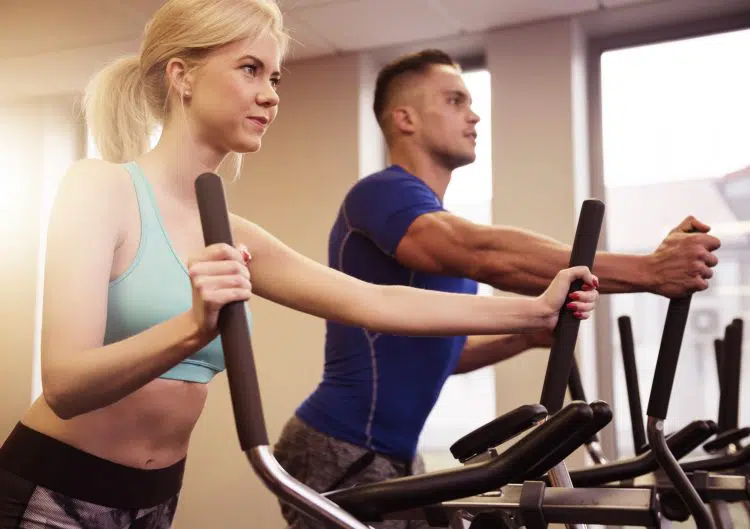
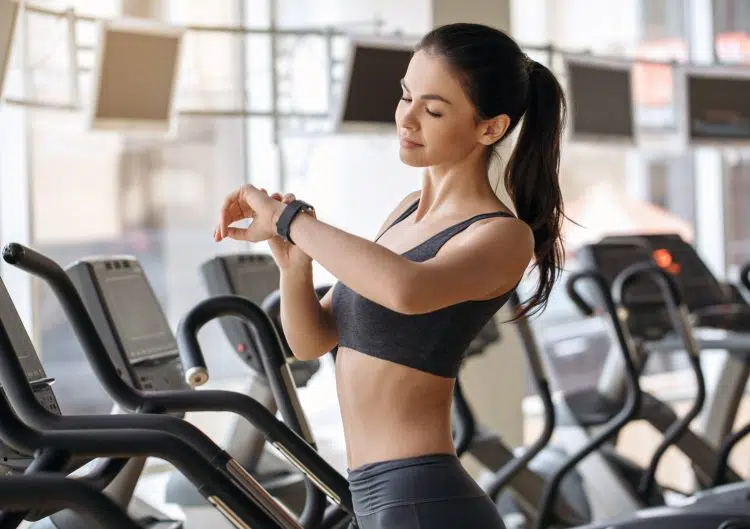

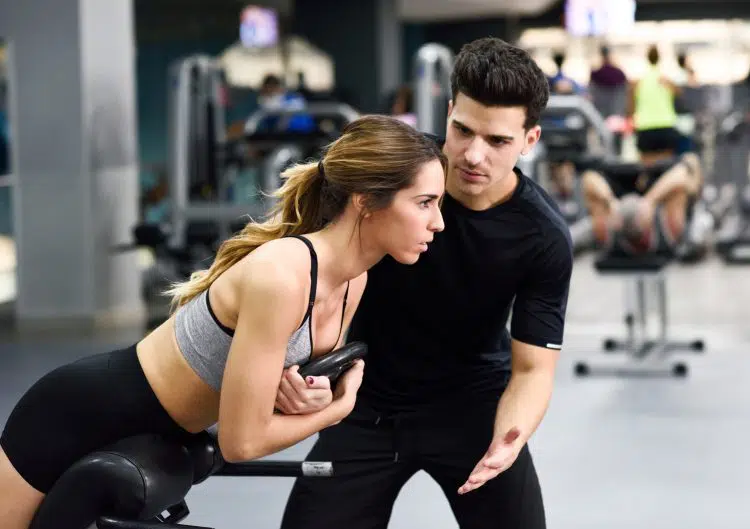


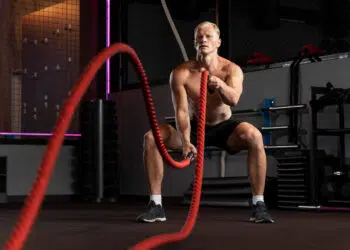
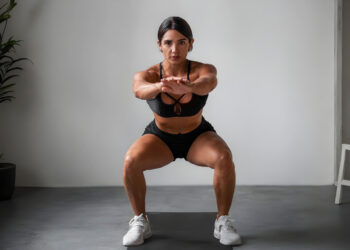




doesn’t lower heart rate target metabolizing fat where higher heart rate burns more calories but they come from metabolizing carbohydrates instead of fat…?
Thanks for your comment!
You are right – lower intensities mean more kilocalories come from fat while higher intensity mean more kilocalories come from carbs.
However, the source of those kilocalories doesn’t really matter much and it’s total energy expenditure that matters most.
Lower intensity exercise tends to burn fewer kilocalories per minute, but you can do it for longer. Higher intensity exercise burns more kilocalories per minute, but workouts tend to be shorter.
“Ten minutes of HIIT burns 20-30% more calories than the same duration of LISS. However, because HIIT workouts are shorter, it’s entirely possible to burn the same number of calories with both types of exercise. You’ll just need to work out longer with LISS to do it.”
That’s why both can be effective tools for weight loss, hence our rating of a draw in this category and it can’t be said that one is better than the other as it depends on whether you prefer short but intense or longer, easier workouts.